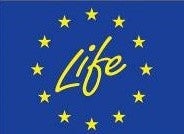Seven species of sharks and rays, protected in the Mediterranean
Good news for sharks: the list of wildlife species under special protection procedure just include the Mediterranean populations of seven species: dogfish, common Shortfin Mako, porbeagle, stripe candle, Malta, common guitar and guitar Blackbeard stripe. Thus, the Spanish legislation prohibits that bother them, capture or killed, and that traded with them Overfishing has wiped out … Read more

